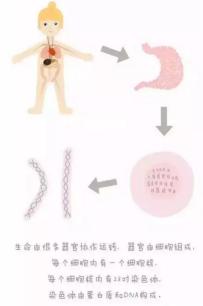|
|
The highest realm of MedicineIssuing time:2020-10-24 11:22 Practice has proved that only focusing on clinical treatment and not focusing on health science, doctors will inevitably get tired. Only by going from "downstream" to "upstream" and turning the salvagers into preventing people from falling into the water can we get out of the dilemma of "getting more and more busy". According to Hu Dayi (Vice President of the Chinese Preventive Medicine Association, Director of the Institute of Cardiovascular Diseases, Peking University People's Hospital, and head of the Department of Cardiovascular Medicine, a national key discipline), the current medical model and medical insurance payment methods in China are in an inverted triangle. Although the whole society is continuously increasing its investment in health, it is focused on the treatment process after the illness and the recurrence of the disease until the end of the disease. "It's like waiting for someone to get sick, waiting for the disease to relapse, until death, but this is actually a common sense error." Hu Dayi said, for example, a 35-year-old or a 40-year-old person suffered a sudden myocardial infarction. This is life. tragedy. In fact, most myocardial infarctions can be prevented through prevention. But unfortunately, more doctors are currently focusing on treatment, holding advanced treatment tools, and practicing their skills day and night, but the result is counterproductive. In this regard, Hu Dayi said that a doctor’s sense of accomplishment should not only come from rescuing patients, but should also consider how to reduce the incidence. It is the doctor's greatest contribution to keep the public from getting sick, getting sick less, and getting sick late. Based on the current reality in China, the overall health literacy level of the residents is low, the popularization of health science is still very backward, and the public's medical knowledge is still very scarce. This has led to many people not believing in medicine in normal times, and seeking care indiscriminately when they are sick. One of the ways of prevention: genetic testing. The relationship between genes and genetic diseases There are more than 7,000 diseases caused by genetic defects. Each of these hereditary diseases is enough to change the fate of the patient and the whole family. What is a genetic disease?
Examples of genetic disease pathology Chromosomal abnormalities As a gene carrier, chromosomes may also make mistakes in the process of DNA replication and recombination: sometimes it is a partial error, such as partial deletion, sometimes the increase of the entire chromosome is a deletion. This can cause serious diseases, such as the well-known Down syndrome. Single gene disease The harm of a single gene defect should not be underestimated. Chromosomes are divided into autosomes and sex chromosomes, and genes on chromosomes are also distinguished between dominant and recessive. Phenylketonuria is an autosomal recessive genetic disease. The disease-causing gene prevents the patient’s liver from producing the enzyme that metabolizes phenylalanine. Phenylalanine is abundant in high-protein foods, such as eggs, milk, fish and soy products. Since phenylalanine in these daily foods cannot be metabolized, it will accumulate in a large amount in the patient's blood and brain, hindering brain development and causing mental retardation. Mitochondrial genetic disease In addition to the genetic material in the nucleus, there is also a small amount of DNA in the organelles of mitochondria. Mitochondria are the main place for the synthesis of energy material ATP, so they are called the "power station" of the cell. Once there is a problem with the genes of the "power station", it will also threaten our health. Drug-induced deafness is a common mitochondrial genetic disease. Carriers of mitochondrial gene defects are more likely to be affected by ototoxic drugs such as aminoglycoside drugs. For normal people, a safe drug dose can make them "deaf with one shot." Common genetic diseases in life are: hypertension, diabetes, breast cancer, stomach cancer, colorectal cancer, lung cancer, etc. KBM has launched various disease susceptibility gene testing services to meet your needs. For details, please contact: qq: 3053646370 Phone: 0571-82725909 Email: hongqj@kbmlifesci.com The above content is integrated and reproduced from: "Global" magazine, Zhengda First Affiliated Hospital Genetics and Prenatal Diagnosis Center, etc. |



